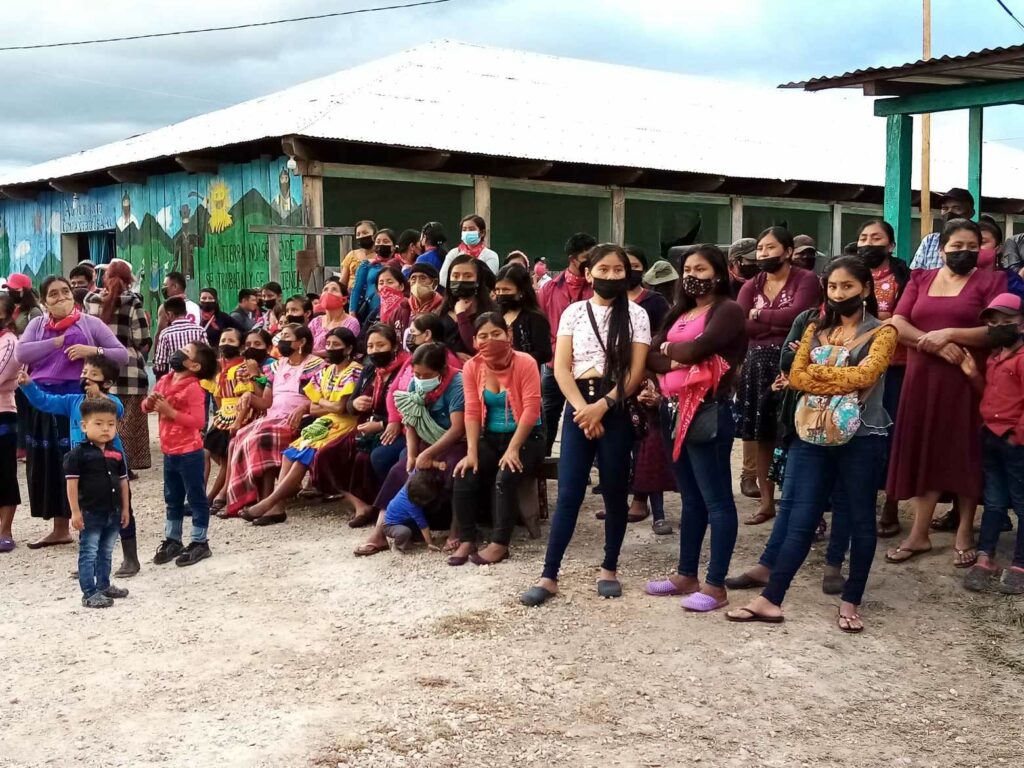
Two weeks have now passed since the commemoration of the 30th anniversary of the Zapatista uprising on January 1st, 1994, and much has been written and printed about it since then. The words and actions of the Zapatistas during the four-day event have been scrutinized and analyzed, leaving little else to be said. A range of opinions from the Mexican media has already been shared here by Schools for Chiapas. What follows is a personal account of one of the many guests of the Zapatistas.
When the Zapatistas announced the event to commemorate the 30th anniversary of the start of the War against Oblivion, they noted that it was their duty to discourage people from coming while at the same time inviting them. They warned of the chaos that reigns in the main cities of the southeastern Mexican state of Chiapas, of the presence of “Disorganized Crime”, road blockades, assaults, kidnappings, and shootings.
On arrival at the Dolores Hidalgo Caracol on December 31st, it was obvious that a few thousand people had chosen to ignore their advice. The road from San Cristobal to Ocosingo and from there to the Caracol had been clear, and on entering, one immediately felt at home, relaxed and safe, the last being a feeling that is somewhat of a rarity these days in Chiapas.
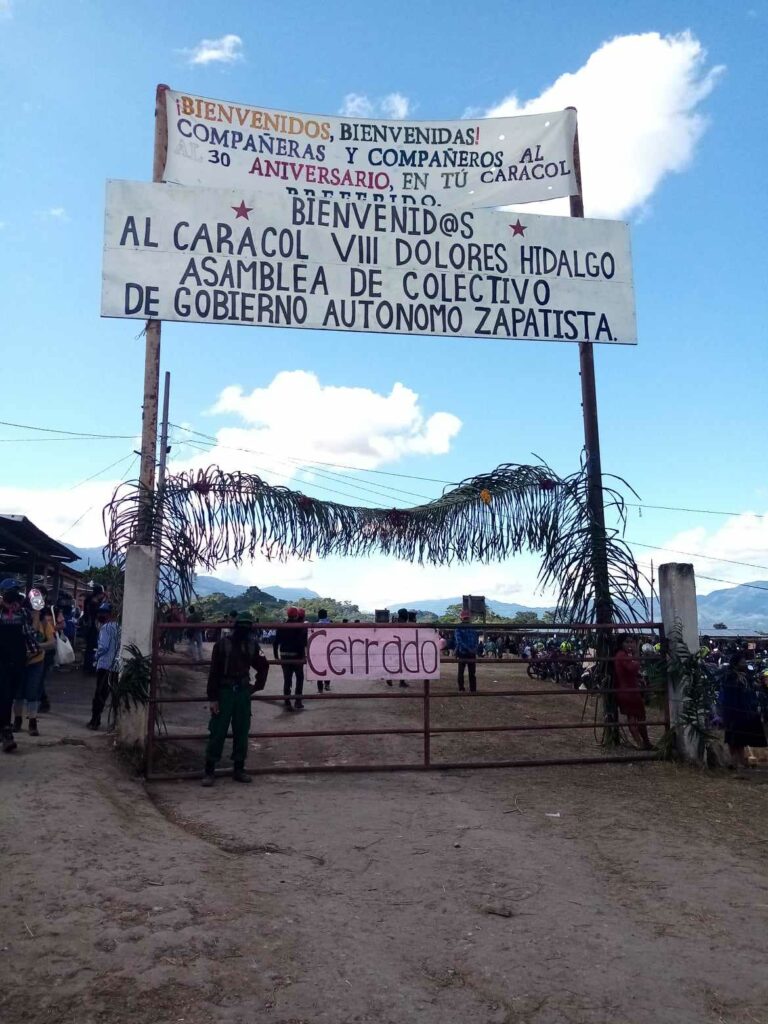
The results of weeks of labor and preparation were obvious. A health center, twelve kitchens for each of the Caracoles, another two for visitors (one offering free beef stew and coffee), a huge stage for the main events which faced an esplanade, flanked by long rows of different types of bicycles on both sides, guarded by the militia. Most of the visitors were transported to and housed in local Zapatista communities and there was also a camping area. As always, the Zapatistas never fail to surprise with their organizational capacity.
It was time to pitch the tent and settle down for a sober New Year’s Eve. This would be in stark contrast to the initial eruption of the Zapatistas across our TV screens. Gathered together in Euskal Herreria with Basques, Chileans and Irish in the midst partying, our attention was suddenly drawn to the news of a formidable armed uprising. Initially unsure as to the location due to the landscape and the masked figures (could it be Cambodia?), we slowly began to realize it was Mexico. It was the 35th anniversary of the Cuban Revolution and also the day that NAFTA would come into effect. Even at that moment, it was clear that it wasn’t the end of history despite what Fukyama had told us, and that there was an alternative, contrary to Margaret Thatcher’s claim. The party continued for another day.
Thirty years later we face a very different scenario. Mexico is in the grip of organized crime, left movements have come and gone, fascism is on the rise internationally, people are on the move across the planet, many of them victims of the global climate catastrophe that seems to be ever more closer. Yet here we were in a huge field together with the Zapatistas soberly celebrating their survival despite huge odds over those same thirty years.
Not only is the movement alive, it was even kicking at this event, evidenced by the huge presence of young Zapatistas, second or even third generation to those who took part in the initial uprising. That night, the militia treated us to a wonderfully choreographed march to the sound of cumbia and then broke into dance. The anti-army army. And despite the presence and participation of guests from different geographies, this was their anniversary, their celebration and their event. Sub-commander Moises made this very clear by almost entirely addressing himself to his Zapatista compañeros and compañeras, EZLN support bases and the National Indigenous Congress, first in Tseltal and then in Spanish. Almost everyone I spoke to had a different interpretation of what he actually said and they spoke and analyzed his words late into the night. Meanwhile, the Zapatista youth danced to more cumbia and rancheras. It was their celebration after all.
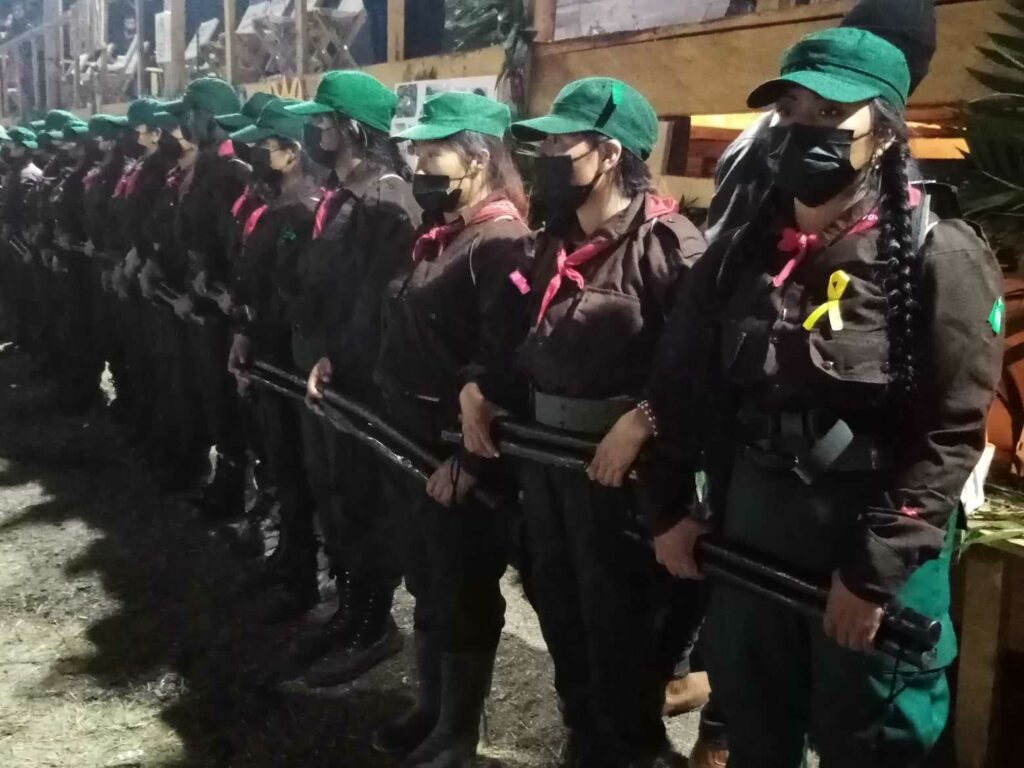
Many of the guests began leaving on January 1st, although some stayed on following sightings of Captain Marcos, perhaps in the hope that he would give some inspiring and entertaining speech. Others stayed curious to see what was going to happen with the bicycles. More and more Zapatistas were still arriving. The three-year-old boy who accompanied us had made new friends with the Popcorn Commando Unit as they played away on inflatable plastic whales, unicorns, crocodile and dragons behind the main stage, and it became clear what the compas were referring to when they prohibited minors stoning or harassing these creatures in the invitation to the anniversary. Once again there was on overwhelming sense of safety, and, I repeat, it is such a rarity these days in Chiapas that it is overwhelming. Knowing that this little guy would not go missing in a state where ten minors disappear every week.
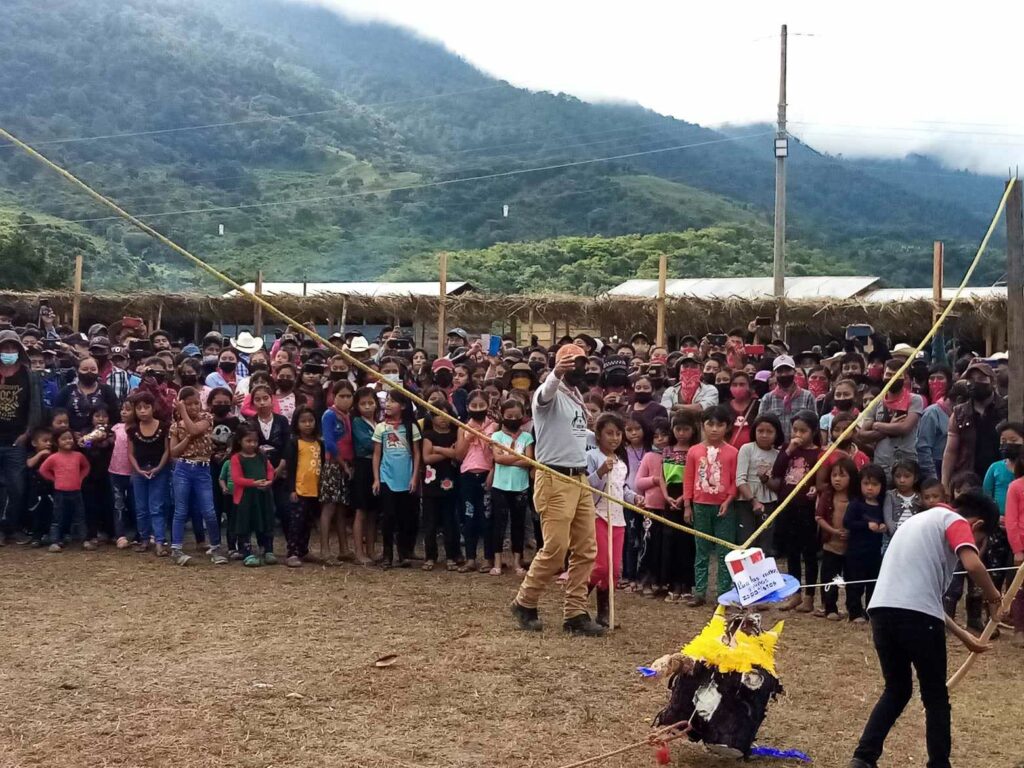
As night fell, it became apparent that Captain Marcos had nothing to say and nothing of great consequence was going to happen with the bicycles either. Instead we had a screening of the“La Montaña” documentary about the maritime leg of the Zapatista Journey for Life to Europe. We were fortunate enough to be accompanied by Bernal, one of the crew, and be able to discuss his own impressions of the voyage and the documentary. It was our first time to see it. It was his too. Then once again, the Zapatista youth danced into the small hours of the night.
Few visitors remained by the last day of the event, which was a day to wind down and relax. It was also a day for the youngest of the support bases present, who got to enjoy smashing a huge Uncle Sam piñata before forming lines for the contents to be divided equally in typical Zapatista fashion. “Para todos, todo.“ A small glimpse through a crack of perhaps what they mean when they talk about Zapatista children 120 years from now. And the older youth danced on.
The following morning, the Zapatistas were up at the crack of dawn dismantling the temporary structures and storing the still unused bikes away. There was little evidence of the event to be seen as we left. So what has been the impact of the Zapatistas thirty years after that heady night in Euskal Herreria? There is a famous (untrue) anecdote that when the late Chinese premier, Zhou Enlai, was asked about the impact of the 1789 French Revolution, he answered that it was too early to tell. The same may be true of the Zapatistas, but let’s hope that they’re still dancing 120 years from now.
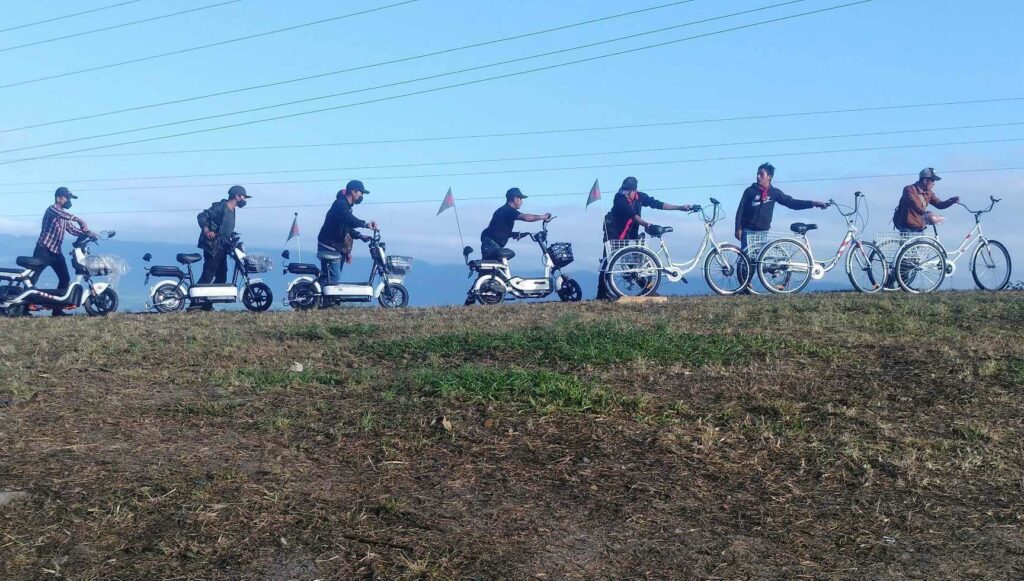
Original article by Schools for Chiapas.
Photos by Schools for Chiapas.
